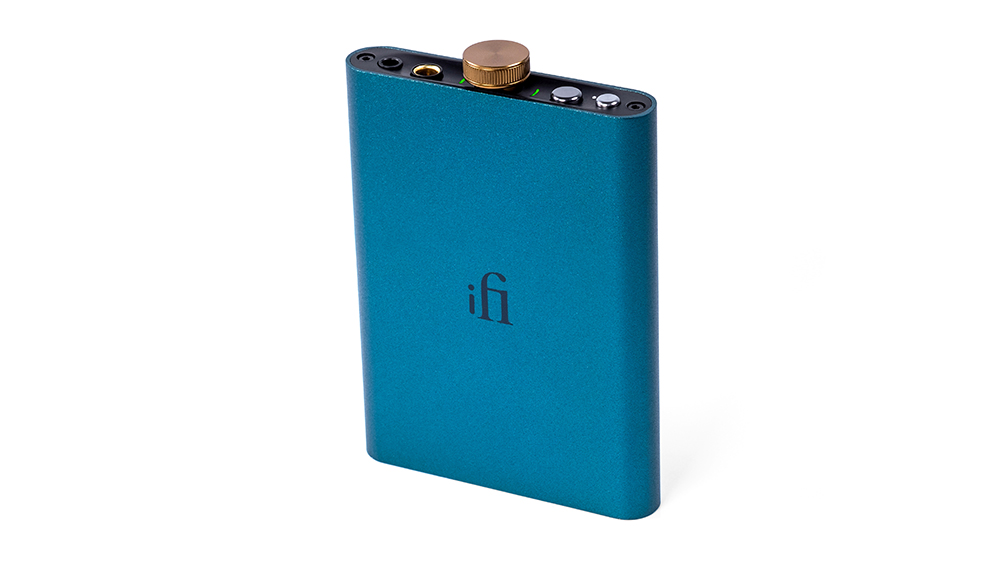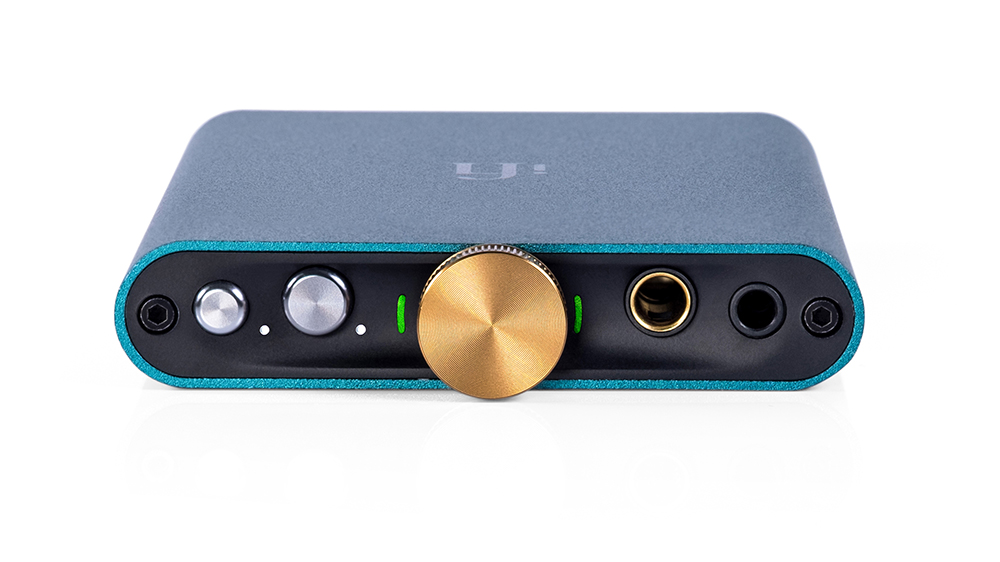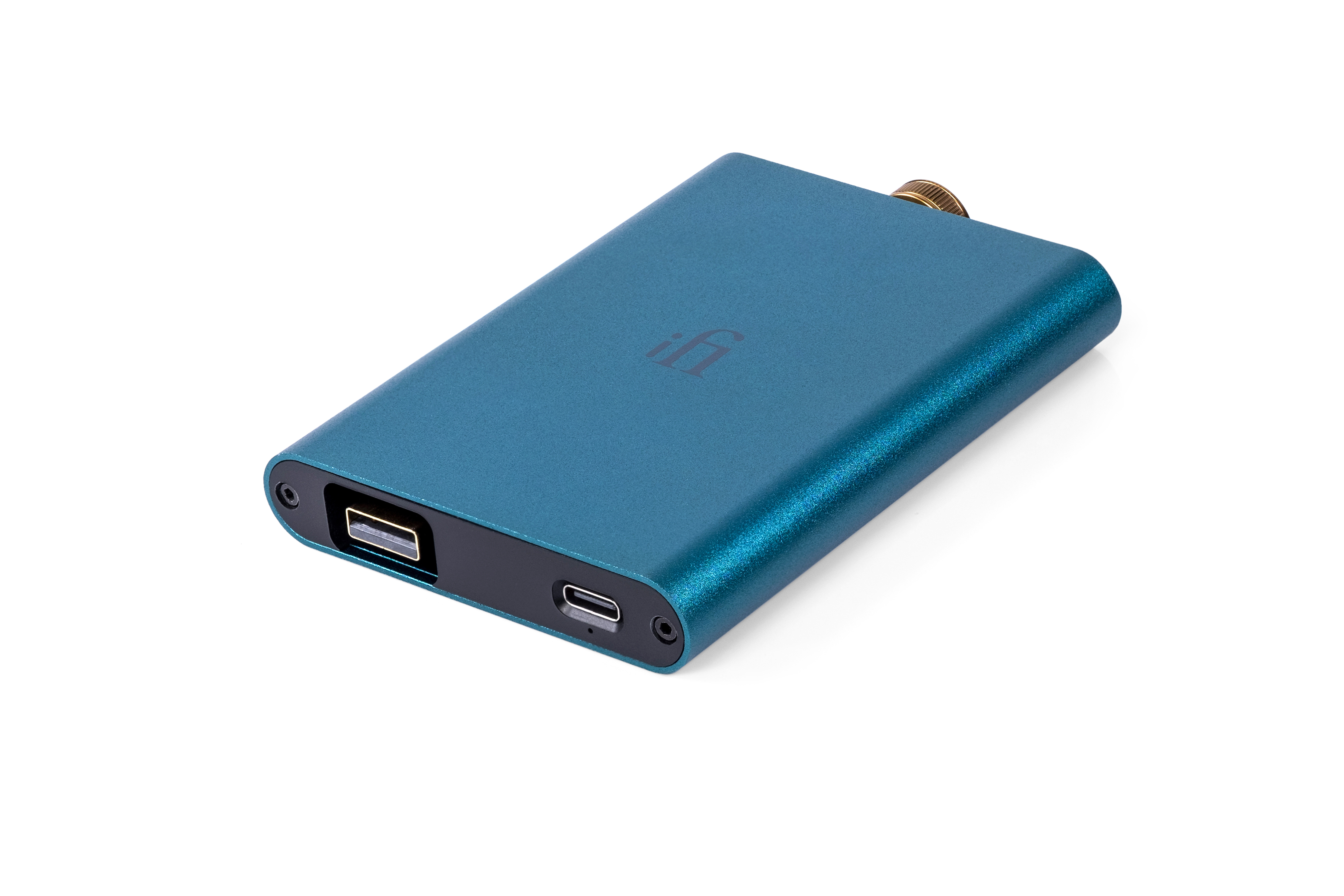Portable iFi hip-dac resembles a hip flask (but can't smuggle alcohol)
Destined to go down like an ice-cold beer in the summertime

Music and booze have quite the history of course, but against all odds their relationship is still experiencing firsts – as shown by the arrival of iFi's latest portable DAC/headphone amplifier. The company's new hip-dac (£149) resembles, and is celebratorily named after, the traditional hip flask. So there you have it: an audio-boosting hip flask (that you can't drink out of). Sure, we'll raise a glass to whoever came up with that concoction.
The hip-dac appears to be a promising proposition for anyone looking to boost their phone, tablet or laptop's sound quality (providing they're confident they wouldn't get it mixed up with their actual drinking flask – we highly doubt the hip-dac is waterproof). As is the case with every iFi DAC we’ve come across, it is well spec’d for its price.
Like many of its siblings, the iFi hip-dac utilises a Burr-Brown DAC chip, which the company chooses for its ‘highly musical sound’ and True Native architecture. The latter ensures that PCM and DSD files, supported up to 32-bit/384kHz and DSD256 respectively, take separate pathways, ensuring they each remains ‘bit-perfect’ in their native form right through to analogue conversion. Two LEDs that reside either side of the rotary volume dial change colour to indicate the format and sampling rate of the music being played.

iFi claims two other technologies differentiate the hip-dac from competing designs: its clocking system eradicates jitter, and therefore distortion, until the conversion process, while the XMOS chip that processes the audio data received by the USB input is programmed in-house in the name of sonic accuracy.
Also used to fly the flag for sound quality is balanced circuitry, which iFi says uses high-quality components. The headphone amp is capable of outputting up to 700mW – depending on the impedance of the connected headphones of course – and iFi’s PowerMatch switchable gain allows owners to easily match the level of the drive to the load presented by the headphones.

As you can see, there are two USB ports onboard: the USB Type A input is for audio transmission while the USB-C socket is for battery charging. Speaking of which, the hip-dac’s 2200mAh battery offers around eight to 12 hours of playback depending on the volume level and the power demand of the headphones. Both normal and balanced headphones can be plugged directly into the hip-DAC via its 3.5mm and Pentaconn 4.4mm outputs respectively.
The iFi hip-dac is priced £149 and comes with USB-C and USB Type A cables for connecting Android devices and PCs/laptops, as well as a charging cable. The Camera Adapter required to connect iOS devices is purchased separately.
Get the What Hi-Fi? Newsletter
The latest hi-fi, home cinema and tech news, reviews, buying advice and deals, direct to your inbox.
MORE:
Best DACs 2020: USB, portable and desktop DACs
Read What Hi-Fi?'s iFi reviews
MEPs vote for universal phone connection and an end to Apple Lightning
Becky is the managing editor of What Hi-Fi? and, since her recent move to Melbourne, also the editor of the brand's sister magazines Down Under – Australian Hi-Fi and Audio Esoterica. During her 11+ years in the hi-fi industry, she has reviewed all manner of audio gear, from budget amplifiers to high-end speakers, and particularly specialises in headphones and head-fi devices. In her spare time, Becky can often be found running, watching Liverpool FC and horror movies, and hunting for gluten-free cake.
-
njw1 Surely if the audio input is USB A then the standard Lightning cable Apple supplies with the iPhone will work, no need for the Camera Aadapter?Reply

